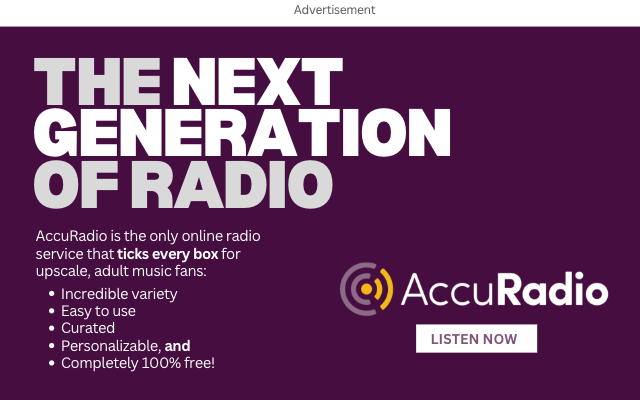James Cridland , radio futurologist, is a conference speaker, writer and consultant. He runs the media information website media.info and helps organise the yearly Next Radio conference. He also publishes podnews.net, a daily briefing on podcasting and on-demand, and writes a weekly international radio trends newsletter, at james.crid.land.
, radio futurologist, is a conference speaker, writer and consultant. He runs the media information website media.info and helps organise the yearly Next Radio conference. He also publishes podnews.net, a daily briefing on podcasting and on-demand, and writes a weekly international radio trends newsletter, at james.crid.land.
Greetings from Toronto! Above: Daniel Anstandig is one of the keynotes for Radiodays North America, at 8.45am on Thursday. I’m on at 8.45am on Friday, so I assume there’s one of me somewhere, right? Right?

On the right: an “English ale” from the nearest brewpub, called “Pompous Ass”. I’d suggest it has rather too much of a head to be an English ale, and it’s spelt “arse”, but perhaps I’ve fallen into the trap.
Radio 360 launches in Australia
This week, there was a big change to the way Australian radio stations were measured – and how it’s reported.
Radio is typically measured in two ways in most countries: recall-based systems like diaries or phone surveys, or electronic measurement, like the PPM used in the US.
Recall-based systems like diaries are good methods of capturing radio listening: they’re platform agnostic and, as long as the sample size is big enough, seem to give very consistent data. However, they can suffer from misattribution, and they do rely – to a degree – on memory, since most people don’t carry the diary around with them like they should. It’s one reason why you see strangely uncompelling advertising for breakfast shows on poster sites in Australia – a picture of the hosts, their names, and a station logo: they’re not there to get you to listen, they’re there to remind you that you did.
Electronic systems like the PPM are also good methods of capturing radio listening. They record actual listening, assuming the unit picks up the hidden codes (you may remember Voltair, a thing that makes the codes sound louder and therefore increases audience figures for stations who use it). They work well, as long as the sample size is big enough: though that’s one of the issues – electronic devices are expensive, so the sample size is usually rather smaller. Some countries use mobile apps like Mediacell, though mobile apps come with their own challenges.
Some of radio listening is now online, where we have accurate streaming log data. Streaming log data shows individual devices – when they tune in, when they tune out. App data can also measure the volume control and other things.
Uniquely (I think), in Australia, CRA’s Radio 360 measurement is measuring all three of the above to compile their numbers.
The bulk of the survey is derived from 10,000 diaries per year in each Australian capital city. 400 people in each Australian capital city wear a watch-like PPM device, which measures listening electronically. Additionally, streaming logfile analysis and app data is also used.
The CRA promised consistency as a major part of this new system, and the numbers which came out earlier this week certainly show that promise has been met. There are no big changes to the numbers.
There is, though, a big change to the public reporting, which now includes a new sheet marked “by radio type”, which splits broadcast radio and streaming. Those figures are, I think, quite revealing for radio’s multiplatform future.
Almost across the board, hit music stations do worse when streaming; and talk radio stations do better.
In Sydney, newstalk station 2GB achieved a 12.2% market share overall; but a staggering 21.5% share of all online radio listening. ABC Radio Sydney had a pleasing rise this survey to 6.5% overall share; but a 9.9% share of all online listening.
Compare with home of Kyle and Jackie O, KIIS 106.5, with a market share of 13% overall, but 11% of streaming; Nova, with a 7.1% share overall, but just 4% of online listening.
For years, I’ve been suggesting that there is a different future for talk-heavy radio vs music-intensive radio. My take, which isn’t really rocket science, is that music-intensive radio has a much worse future than talk: because services like Spotify and YouTube Music are better alternatives. This data seems to show that, and is (I think) the first public set of data to do so. Good to see.
Caution, of course, needs to be made. Online listening in Australia is only about 20% of all radio listening, so optimising for online radio might be a mistake for now. Broadcast radio is still where it’s at. For now.
-
In other news…
- Bauer’s Absolute Radio turned all its AM transmitters off earlier this year – against the terms of its Ofcom licence, leading to a fine. That fine was £25,000. To put that into context, that’s significantly less than one month’s electricity bill for one of the transmitters they turned off.
- On “radio on the TV” – I’m grateful to Michele Logrippo for emailing me, reminding me about the excellent TV output produced in Italy from radio stations, like RTL 102.5 and many others. I used to have a good long section showing off their broadcasts on my “future of radio” talk. Watching RTL 102.5’s output online is worthwhile. I should dive more into radio simulcasts on TV.
- Also on “radio on the TV”, I’m grateful to a few BBC folk for reaching out. I’m in Salford next week, and look forward to seeing how that operation works.

